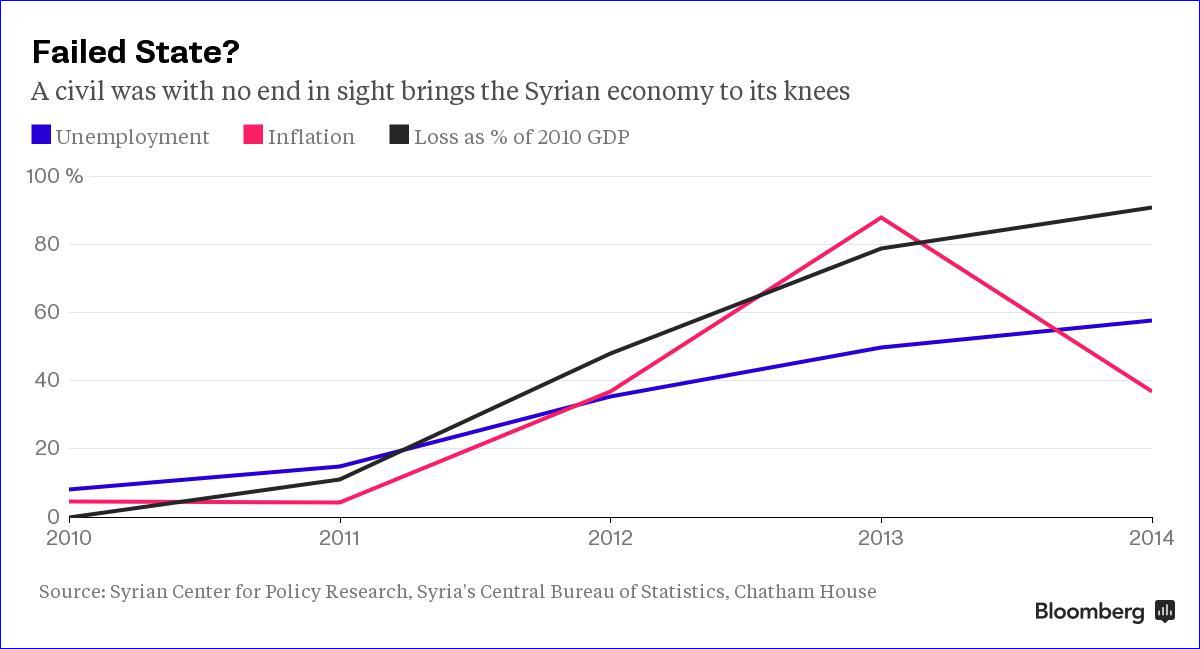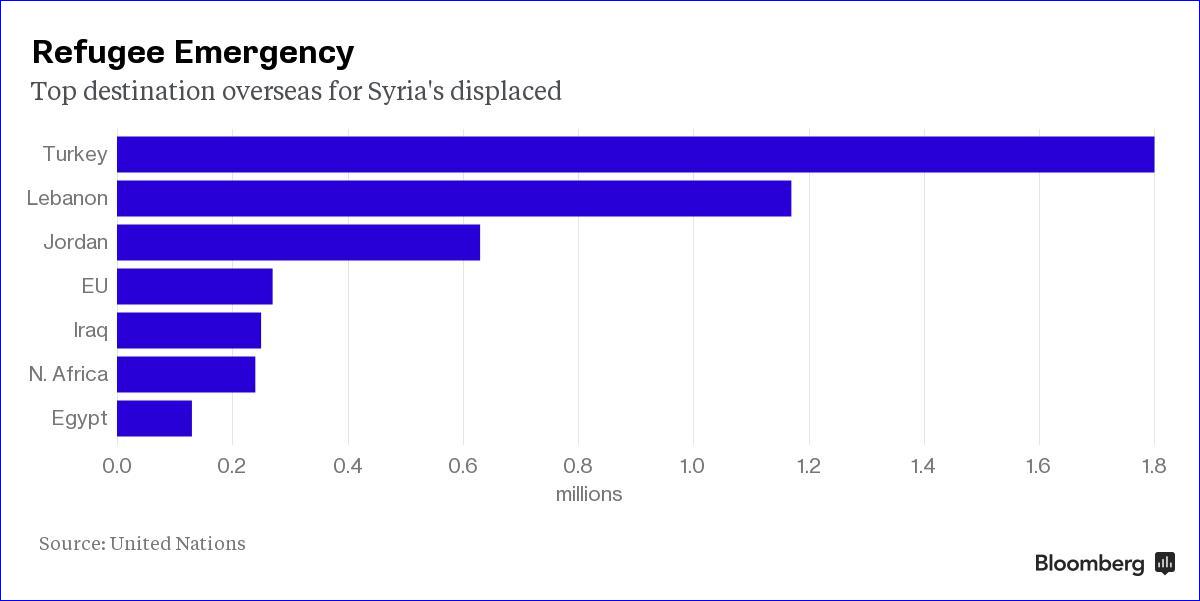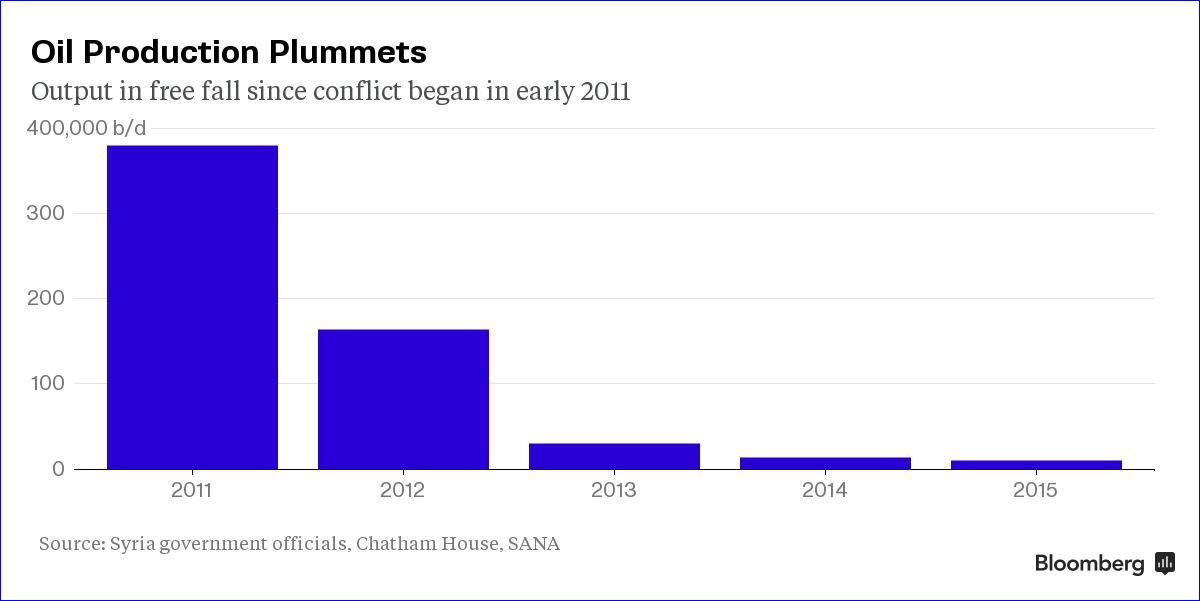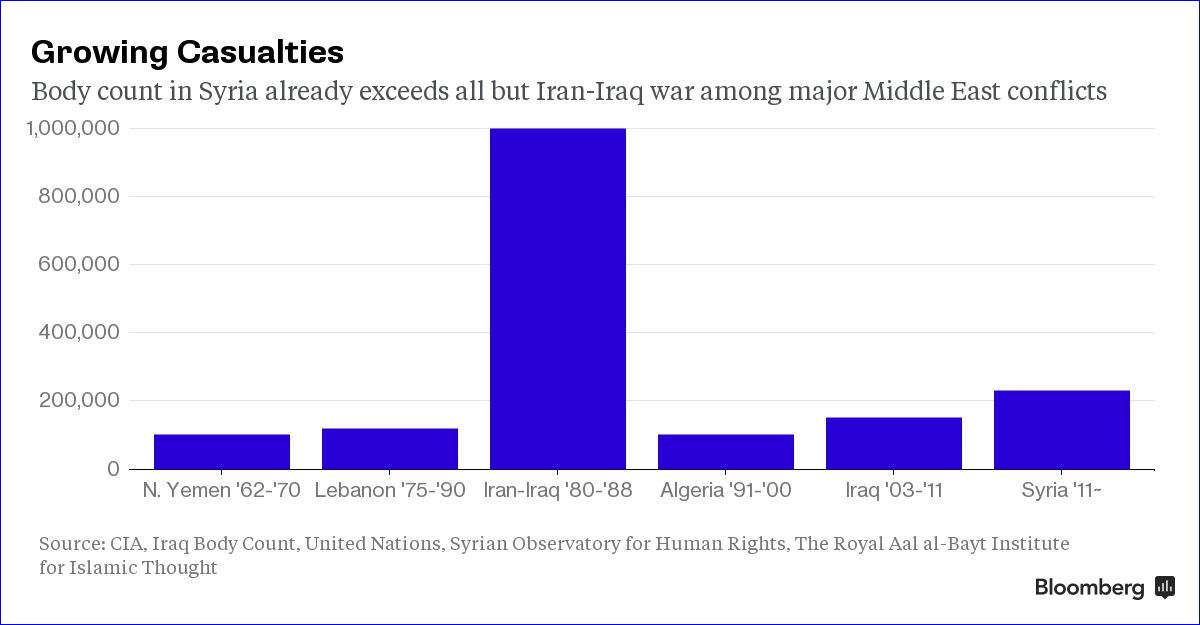MESOP ANALYSIS : How War Has Destroyed Syria’s Economy in Four Charts
By Caroline Alexander and Donna Abu-Nasr – Bloomberg – 2015-07-29 -Once a promising economy and even a destination for refugees from other conflicts, Syria has transformed into the Middle East’s biggest humanitarian and economic disaster of the past 25 years. With violence spreading across the region, attention has shifted from Syria’s civil war that began in 2011.
Here are four charts showing Syria’s rapid decline.
1. An economy in tatters

The cumulative economic loss since war broke out is equivalent to 229 percent of the country’s 2010 gross domestic product, according to research by the Syrian Center for Policy Research. Energy, manufacturing and agriculture have suffered the most, Chatham House said in a report last month.
“Wealth and production infrastructure has been destroyed,” said Sami Nader, head of the Beirut-based Levant Institute for Strategic Affairs. “It’s also threatening the economy and social fabrics of border countries, namely Lebanon and Jordan, which don’t have the resources to absorb the large number of refugees.”
2. Seeking refuge

More than four years of fighting has left about 11 million people as refugees or internally displaced. The impact has been particularly acute on Syria’s youngest generation, hobbling any eventual recovery. In a country where the pre-war literacy rate was about 90 percent, many children are now deprived of an education. More than 11,000 have died, and children make up more than half of the refugee population, according to Save the Children.
3. Crude no more

Before the European Union suspended crude imports in September 2011, Syria produced about 380,000 barrels a day, according to then Oil Minister Sufian Alao. Production has since collapsed, with Islamic State and other militant groups using limited supplies for their own operations.
First quarter oil production averaged 9,486 barrels a day, the state-run SANA news agency cited a report by Syria’s General Establishment for Petroleum as saying.
4. Deadly nation

The death toll is estimated to have passed at least 230,000 as of June. In the region’s modern history, it is eclipsed only by the eight-year Iran-Iraq war that ended in 1988, which is widely estimated to have left a million people dead on both sides.